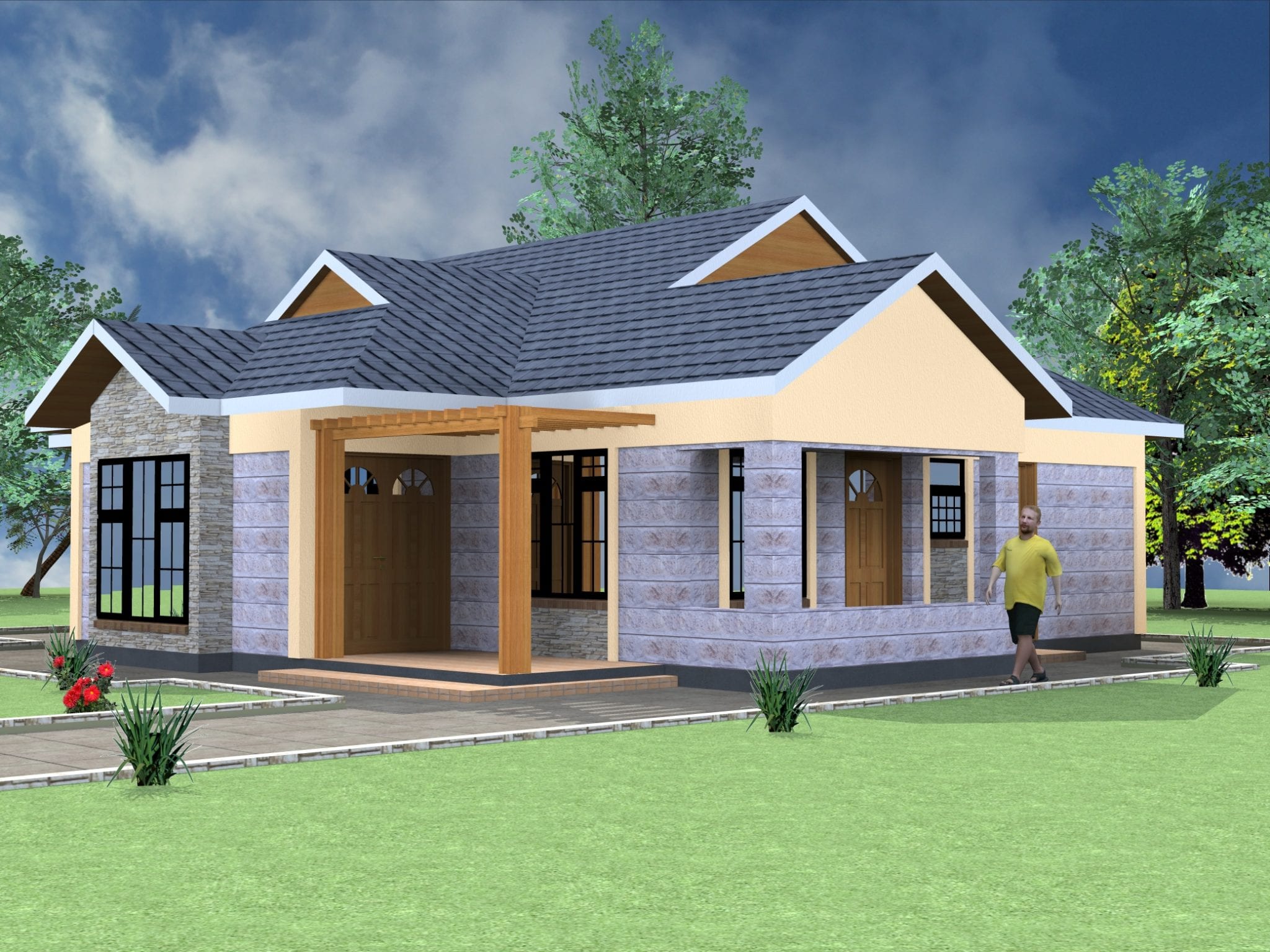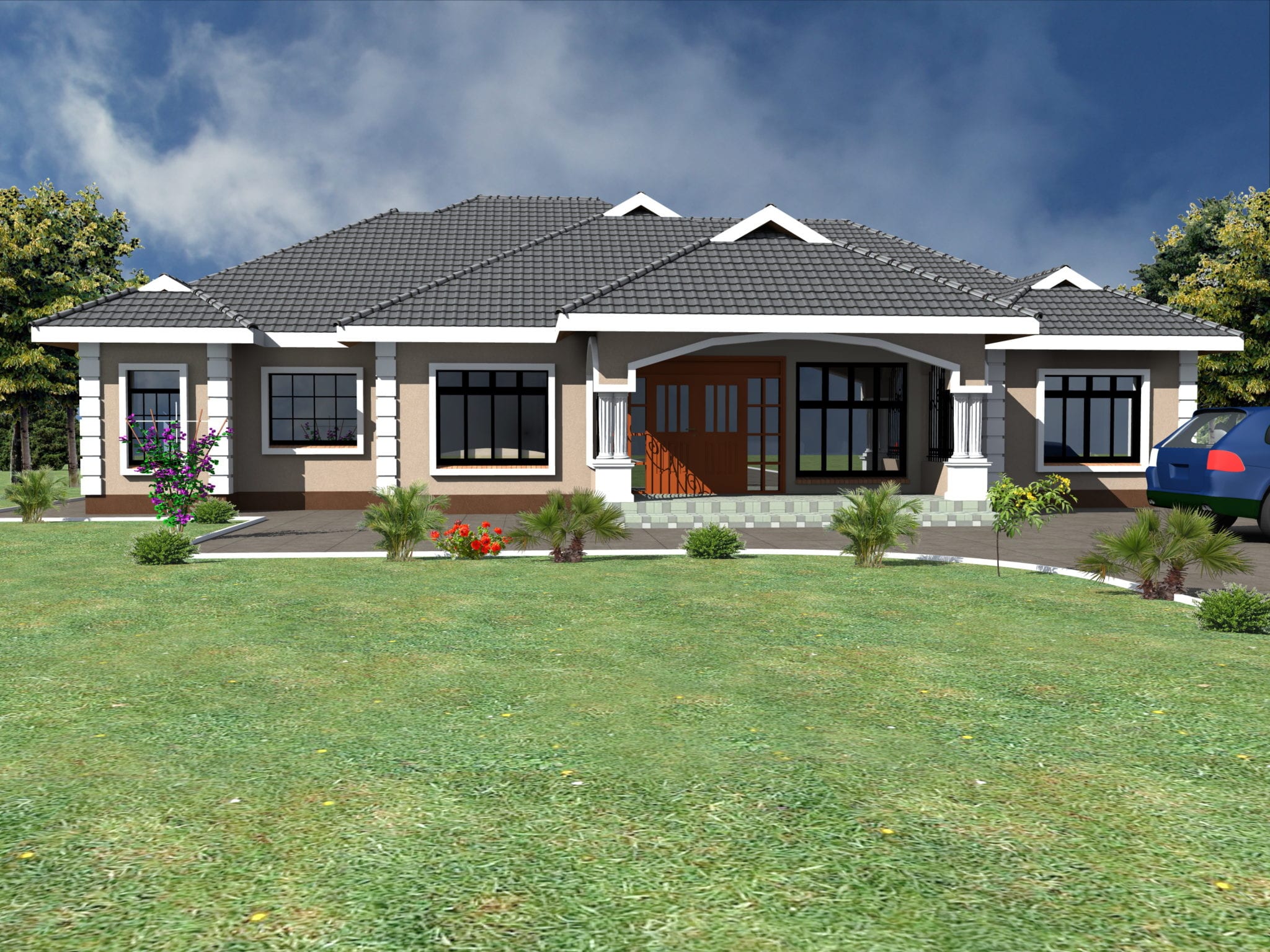Designing Your Dream Space: 4 Bedroom New House

Creating a four-bedroom home is an exciting endeavor, offering ample space for family, guests, and individual pursuits. Designing a functional and stylish layout requires careful consideration of your family’s needs, lifestyle, and aesthetic preferences. This section will explore key considerations for designing a four-bedroom layout, provide examples of popular configurations, and present a sample floor plan.
Key Considerations for Designing a Four-Bedroom Layout, 4 bedroom new house
A well-designed four-bedroom layout balances functionality with aesthetics. Here are key considerations to ensure a comfortable and stylish living space:
- Maximizing Space: Efficient space utilization is crucial, especially in a four-bedroom home. Consider open-concept layouts that seamlessly connect living areas, maximizing natural light and creating a sense of spaciousness. Built-in storage solutions, such as closets, cabinets, and shelves, can help declutter and optimize space.
- Creating Privacy: While open-concept layouts promote a sense of community, privacy is also essential. Strategic placement of bedrooms, bathrooms, and other private areas can ensure each family member has their own space for relaxation and solitude. Consider using room dividers, sliding doors, or sound-absorbing materials to enhance privacy.
- Incorporating Personal Preferences: Your four-bedroom home should reflect your unique style and personality. From furniture selection to color palettes, incorporate elements that resonate with you and create a welcoming ambiance. Consider using a mix of textures, patterns, and materials to add visual interest and depth.
Popular Four-Bedroom Floor Plan Configurations
Several popular four-bedroom floor plan configurations offer distinct advantages. Here are some examples:
- Traditional Layout: This configuration typically features four bedrooms clustered together, often with a central hallway. It offers privacy and clear separation between bedrooms and living areas. Advantages include well-defined spaces and a sense of order. This layout can be suitable for families with young children who require individual spaces.
- Open-Concept Layout: This layout features a large, open living area that combines the kitchen, dining room, and living room. It promotes a sense of spaciousness and connection between family members. Advantages include flexibility, natural light, and a sense of openness. This layout can be ideal for families who enjoy entertaining or prefer a more communal living experience.
- Split-Level Layout: This layout features bedrooms and bathrooms on different levels, often with a central living area. It offers a unique blend of privacy and connectivity. Advantages include a separation of spaces, privacy, and a distinctive architectural design. This layout can be suitable for families who want a more distinct separation between living areas and bedrooms.
Sample Four-Bedroom Floor Plan
The following sample floor plan showcases a traditional four-bedroom layout with a focus on functionality and style.
[Image of a sample floor plan]
This floor plan features:
- Spacious Living Area: The living area is designed to be the heart of the home, offering ample space for entertaining and family gatherings.
- Well-Defined Kitchen: The kitchen is strategically located near the dining area, creating a convenient flow for meal preparation and dining.
- Private Bedrooms: Each bedroom is designed to provide a comfortable and personal space for rest and relaxation.
- Shared Bathroom: The shared bathroom is located centrally, providing easy access for all bedrooms.
- Master Suite: The master suite features a large bedroom, walk-in closet, and en-suite bathroom, offering a luxurious and private retreat.
Building a Foundation for the Future

Building your dream home is a significant undertaking, and laying a solid foundation is crucial for a successful and enjoyable experience. This section delves into the essential aspects of the building process, guiding you through crucial steps and considerations.
Choosing the Right Builder
Selecting the right builder is a pivotal decision in the homebuilding journey. A reputable and experienced builder can ensure quality construction, adherence to timelines, and a smooth overall process.
- Research and gather recommendations: Start by seeking referrals from friends, family, or professionals in the real estate industry. Online platforms and industry associations can also provide valuable insights.
- Evaluate experience and expertise: Look for builders with a proven track record in constructing homes similar to your desired style and size. Check their portfolio and testimonials to gauge their expertise.
- Assess communication and transparency: A good builder will maintain open communication throughout the project, providing regular updates and addressing your concerns promptly. Ensure they have a clear understanding of your vision and expectations.
- Obtain multiple bids and compare: Request detailed bids from several builders to compare pricing, scope of work, and payment terms. Carefully review the contracts and ensure all details are clear and agreed upon.
Understanding Construction Timelines
Construction timelines can vary depending on factors such as the size and complexity of the home, weather conditions, and local regulations. It is crucial to have a realistic understanding of the expected timeframe to manage your expectations and plan accordingly.
- Discuss the timeline with the builder: Obtain a detailed construction schedule outlining key milestones and anticipated completion dates. This helps you track progress and identify potential delays.
- Factor in unforeseen delays: It’s wise to account for potential delays due to weather, material shortages, or unexpected site conditions. Having a contingency plan in place can help mitigate stress and keep the project on track.
- Regularly communicate with the builder: Maintain open communication with your builder to discuss any changes or adjustments to the timeline. Proactive communication is key to addressing issues promptly and minimizing disruptions.
Navigating Permits and Inspections
Obtaining the necessary permits and passing inspections are essential for ensuring your home is built safely and according to local building codes.
- Identify required permits: Consult with your local building department to determine the specific permits required for your project. This may include zoning permits, building permits, and electrical and plumbing permits.
- Understand inspection requirements: Familiarize yourself with the inspection process and the standards that will be applied. This includes understanding the types of inspections required at different stages of construction.
- Work closely with the builder: Your builder should be responsible for handling the permitting and inspection process. Stay informed and involved to ensure everything is done correctly and on time.
Sustainable and Energy-Efficient Building Practices
Integrating sustainable and energy-efficient practices into your four-bedroom home can lead to significant cost savings, reduce your environmental impact, and enhance your comfort.
- Energy-efficient windows and insulation: High-performance windows and proper insulation can dramatically reduce heat loss and gain, lowering energy consumption and heating/cooling costs.
- Renewable energy sources: Consider incorporating solar panels or geothermal systems to generate clean energy for your home. Government incentives and rebates may be available to offset initial costs.
- Water-efficient fixtures: Installing low-flow showerheads, toilets, and faucets can significantly reduce water consumption, saving you money on your water bills.
- Sustainable building materials: Opt for materials sourced from renewable resources or recycled materials, minimizing your environmental footprint.
Checklist of Crucial Steps
Building a new home involves numerous steps, each requiring careful planning and execution. This checklist highlights key stages to guide you through the process.
- Define your needs and budget: Determine the size, style, and features of your dream home and establish a realistic budget.
- Choose a suitable location: Consider factors such as proximity to amenities, schools, and transportation.
- Secure financing: Obtain pre-approval for a mortgage to ensure you are financially prepared for the project.
- Select an architect or designer: Work with a professional to create detailed plans for your home.
- Choose a reputable builder: Carefully evaluate potential builders based on experience, reputation, and communication.
- Review and sign contracts: Thoroughly understand and agree to the terms of all contracts before signing.
- Obtain necessary permits: Work with the builder to secure all required permits from local authorities.
- Monitor construction progress: Regularly visit the site and communicate with the builder to ensure everything is on track.
- Conduct inspections: Attend all required inspections to ensure the home is built according to code.
- Finalize and move in: Complete any remaining details, such as landscaping and interior design, and prepare for your move.
